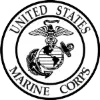Virtual Live Instructor
Free Training Manual
Free Repeat
Course Details
Course Description:
The AZ-400: Microsoft Azure DevOps Solutions course is a 5-day course that is designed to teach students the knowledge and skills to implement DevOps processes. The course will discuss how to use source control, scale Git for an enterprise, and implement and managing build infrastructure.
This course provides knowledge and skills to implement the DevOps practices of continuous integration, continuous delivery, dependency management, continuous feedback, deploy an application infrastructure in DevOps pipelines and design a DevOps strategy.
Topics covered in the course include:
- Describing the benefits of using source control
- Migrating from TFVC to Git
- Scaling Git for Enterprise DevOps
- Implementing and managing build infrastructure
- Manage application config & secrets
- Implementing a mobile DevOps strategy
- Explaining why continuous integration matters
- Implementing continuous integration using Azure DevOps
- Configuring builds and the options available
- Creating an automated build workflow
- Integrating other build tooling with Azure DevOps
- Creating hybrid build processes
- Describing what is meant by code quality and how it is measured
- Detecting code smells
- Integrating automated tests for code quality
- Reporting on code coverage during testing
- Adding tooling to measure technical debt
- Detecting open source and other licensing issues
- Implementing a container build strategy
- Differentiate between a release and a deployment
- Defining the components of a release pipeline
- Explaining things to consider when designing your release strategy
- Classifying a release versus a release process, and outline how to control the quality of both
- Describing the principle of release gates and how to deal with release notes and documentation
- Explaining deployment patterns, both in the traditional sense and in the modern sense
- Choosing a release management tool
- Explaining the terminology used in Azure DevOps and other Release Management Tooling
- Describing what a Build and Release task is, what it can do, and some available deployment tasks
- Classifying an Agent, Agent Queue and Agent Pool
- Explaining why you sometimes need multiple release jobs in one release pipeline
- Differentiate between multi-agent and multi-configuration release job
- Using release variables and stage variables in your release pipeline
- Deployinging to an environment securely, using a service connection
- Embedding testing in the pipeline
- Listing the different ways to inspect the health of your pipeline and release by using, alerts, service hooks and reports
- Creating a release gate
- Describing deployment patterns
- Implementing Blue Green Deployment
- Implementing Canary Release
- Implementing Progressive Exposure Deployment
- Recommending artifact management tools and practices
- Abstract common packages to enable sharing and reuse
- Inspect codebase to identify code dependencies that can be converted to packages
- Identifying and recommend standardized package types and versions across the solution
- Refactor existing build pipelines to implement version strategy that publishes packages
- Managing security and compliance
- Inspecting open source software packages for security and license compliance to align with corporate standards
- Configuring build pipeline to access package security and license rating
- Configuring secure access to package feeds
- Apply infrastructure and configuration as code principles
- Deploying and managing infrastructure using Microsoft automation technologi
AZ-400T01: Implementing DevOps Development Processes
Section 1: Getting started with Source Control
Topics :
What is Source Control?
Benefits of Source Control
Types of source control systems
Introduction to Azure Repos
Migrating from TFVC to Git
Authenticating to your Git Repos
After completing this section, students will be able to:
Describe the benefits of using source control
Migrate from TFVC to Git
Section 2: Scaling git for enterprise DevOps
Topics :
How to structure your git repo
Git Branching workflows
Collaborating with Pull Requests
Why care about GitHooks?
Fostering Internal Open Source
Git Version
Public projects
Files in Git
After completing this section, students will be able to:
Scale Git for Enterprise DevOps
Section 3: Implement & Manage Build Infrastructure
Topics :
The concept of pipelines in DevOps
Azure Pipelines
Evaluate use of Hosted vs Private Agents
Agent pools
Pipelines & Concurrency
Azure DevOps and Open Source projects
Azure Pipelines YAML vs Visual Designer
Setup private agents
Integrate Jenkins with Azure Pipelines
Integration external source control with Azure Pipelines
Analyze & Integrate Docker multi-stage builds
After completing this section, students will be able to:
Implement and manage build infrastructure
Section 4: Managing application config & secrets
Topics :
Introduction to Security
Implement secure & compliant development process
Rethinking application config data
Manage secrets, tokens & certificates
Implement tools for managing security and compliance in a pipeline
After completing this section, students will be able to:
Manage application config & secrets
Section 5: Implement a mobile DevOps strategy
Topics :
Introduction to Mobile DevOps
Introduction to Visual Studio App Center
Manage mobile target device sets and distribution groups
Manage target UI test device sets
Provision tester devices for deployment
Create public and private distribution groups
After completing this section, students will be able to:
Implement a mobile DevOps strategy
AZ-400T02: Implementing Continuous Integration
Section 1: Implementing Continuous Integration in an Azure DevOps Pipeline
In this section, you’ll be introduced to continuous integration principles including: benefits, challenges, build best practices, and implementation steps. You will also learn about implementing a build strategy with workflows, triggers, agents, and tools.
Topics :
Continuous Integration Overview
Implementing a Build Strategy
Lab : Enabling Continuous Integration with Azure Pipelines
Lab : Creating a Jenkins Build Job and Triggering CI
After completing this section, students will:
Explain why continuous integration matters
Implement continuous integration using Azure DevOps
Section 2: Managing Code Quality and Security Policies
In this section, you will be learn how to manage code quality including: technical debt, SonarCloud, and other tooling solutions. You will also learn how to manage security policies with open source, OWASP, and WhiteSource Bolt.
Topics :
Managing Code Quality
Managing Security Policies
Lab : Managing Technical Debt with Azure DevOps and SonarCloud
Lab : Checking Vulnerabilities using WhiteSource Bolt and Azure DevOps
After completing this section, students will be able to:
Manage code quality including: technical debt SonarCloud, and other tooling solutions.
Manage security policies with open source, OWASP, and WhiteSource Bolt.
Manage code quality including: technical debt, SonarCloud, and other tooling solutions.
Section 3: Implementing a Container Build Strategy
In this section, you will learn how to implement a container strategy including how containers are different from virtual machines and how microservices use containers. You will also learn how to implement containers using Docker.
Topics :
Implementing a Container Build Strategy
Lab : Existing .NET Applications with Azure and Docker Images
After completing this section, students will be able to:
Implement a container strategy including how containers are different from virtual machines and how microservices use containers.
Implement containers using Docker.
AZ-400T03: Implementing Continuous Delivery
Section 1: Design a Release Strategy
Topics :
Introduction to Continuous Delivery
Release strategy recommendations
Building a High Quality Release pipeline
Choosing a deployment pattern
Choosing the right release management tool
Lab : Building a release strategy
After completing this section, students will be able to:
Differentiate between a release and a deployment
Define the components of a release pipeline
Explain things to consider when designing your release strategy
Classify a release versus a release process, and outline how to control the quality of both
Describe the principle of release gates and how to deal with release notes and documentation
Explain deployment patterns, both in the traditional sense and in the modern sense
Choose a release management tool
Section 2: Set up a Release Management Workflow
Topics :
Create a Release Pipeline
Provision and Configure Environments
Manage And Modularize Tasks and Templates
Integrate Secrets with the release pipeline
Configure Automated Integration and Functional Test Automation
Automate Inspection of Health
Lab : Automating your infrastructure deployments in the Cloud with Terraform and Azure Pipelines
Lab : Setting up secrets in the pipeline with Azure Key vault
Lab : Setting up and Running Load Tests
Lab : Setting up and Running Functional Tests
Lab : Using Azure Monitor as release gate
Lab : Creating a Release Dashboard
After completing this section, students will be able to:
Explain the terminology used in Azure DevOps and other Release Management Tooling
Describe what a Build and Release task is, what it can do, and some available deployment tasks
Classify an Agent, Agent Queue and Agent Pool
Explain why you sometimes need multiple release jobs in one release pipeline
Differentiate between multi-agent and multi-configuration release job
Use release variables and stage variables in your release pipeline
Deploy to an environment securely, using a service connection
Embed testing in the pipeline
List the different ways to inspect the health of your pipeline and release by using, alerts, service hooks and reports
Create a release gate
Section 3: Implement an appropriate deployment pattern
Topics :
Introduction into Deployment Patterns
Implement Blue Green Deployment
Feature Toggles
Canary Releases
Dark Launching
AB Testing
Progressive Exposure Deployment
Lab : Blue-Green Deployments
Lab : Traffic Manager
After completing this section, students will be able to:
Describe deployment patterns
Implement Blue Green Deployment
Implement Canary Release
Implement Progressive Exposure Deployment
AZ-400T04: Implementing Dependency Management
Section 1: Designing a Dependency Management Strategy
Topics :
Introduction
Packaging dependencies
Package management
Implement a versioning strategy
Lab : Updating packages
After completing this section, students will be able to:
Recommend artifact management tools and practices
Abstract common packages to enable sharing and reuse
Inspect codebase to identify code dependencies that can be converted to packages
Identify and recommend standardized package types and versions across the solution
Refactor existing build pipelines to implement version strategy that publishes packages
Manage security and compliance
Section 2: Manage security and compliance
Topics :
Introduction
Package security
Open source software
Integrating license and vulnerability scans
After completing this section, students will be able to:
Inspect open source software packages for security and license compliance to align with corporate standards
Configure build pipeline to access package security and license rating
Configure secure access to package feeds
AZ-400T05: Implementing Application Infrastructure
Section 1: Infrastructure and Configuration Azure Tools
Topics :
Learning Objectives
Infrastructure as Code and Configuration Management
Create Azure REsources using ARM Templates
Create Azure Resources using Azure CLI
Create Azure Resources by using Azure PowerShell
Additional Automation Tools
Version Control
Lab: Deploy to Azure using ARM templates
Section Review Questions
After completing this section, students will be able to:
Apply infrastructure and configuration as code principles
Deploy and manage infrastructure using Microsoft automation technologies such as ARM templates, PowerShell, and Azure CLI
Section 2: Azure Deployment Models and Services
Topics :
Learning Objectives
Deployment Models and Options
Azure Infrastructure-as-a-Service (IaaS) Services
Azure Automation with DevOps
Desired State Configuration (DSC)
Azure Platform-as-a-Service (PaaS) services
Azure Service Fabric
Lab: Azure Automation - IaaS or PaaS deployment
Moduel Review Questions
After completing this section, students will be able to:
Describe deployment models and services that are available with Azure
Section 3: Create and Manage Kubernetes Service Infrastructure
Topics :
Learning Objectives
Azure Kubernetes Service
Lab: Deploy and Scale AKS Cluster
Section Review Questions
After completing this section, students will be able to:
Deploy and configure a Managed Kubernetes cluster
Section 4: Third Party and Open Source Tools available with Azure
Topics :
Learning Objectives
Chef
Puppet
Ansible
Cloud-Init
Terraform
Lab: Provision and configure an App in Azure Using X
Section Review Questions
After completing this section, students will be able to:
Deploy and configure infrastructure using 3rd party tools and services with Azure, such as Chef, Puppet, Ansible, SaltStack, and Terraform
Section 5: Implement Compliance and Security in your Infrastructure
Topics :
Security and Compliance Principles with DevOps
Azure Security Center
Lab: Integrate a scanning extension or tool in an AZ DevOps pipeline/security center
Section Review Questions
After completing this section, students will be able to:
Define an infrastructure and configuration strategy and appropriate toolset for a release pipeline and application infrastructure
Implement compliance and security in your application infrastructure
Section 6: Course Completion
Topics :
Final Exam
AZ-400T06: Implementing Continuous Feedback
Section 1: Recommend and design system feedback mechanisms
Topics :
The inner loop
Continuous Experimentation mindset
Design practices to measure end-user satisfaction
Design processes to capture and analyze user feedback
Design process to automate application analytics
Lab : Integration between Azure DevOps and Teams
Lab : Feature Flags
After completing this section, students will be able to:
Design practices to measure end-user satisfaction
Design processes to capture and analyze user feedback from external sources
Design routing for client application crash report data
Recommend monitoring tools and technologies
Recommend system and feature usage tracking tools
Section 2: Implement process for routing system feedback to development teams
Topics :
Implement tools to track system usage, feature usage, and flow
Implement routing for mobile application crash report data
Develop monitoring and status dashboards
Integrate and configure ticketing systems
After completing this section, students will be able to:
Configure crash report integration for client applications
Develop monitoring and status dashboards
Implement routing for client application crash report data
Implement tools to track system usage, feature usage, and flow
Integrate and configure ticketing systems with development team's work management
Section 3: Optimize feedback mechanisms
Topics :
Site Reliability Engineering
Analyze telemetry to establish a baseline
Perform ongoing tuning to reduce meaningless or non-actionable alerts
Analyze alerts to establish a baseline
Blameless PostMortems and a Just Culture
After completing this section, students will be able to:
Analyze alerts to establish a baseline
Analyze telemetry to establish a baseline
Perform live site reviews and capture feedback for system outages
Perform ongoing tuning to reduce meaningless or non-actionable alerts
AZ-400T07: Designing a DevOps Strategy
Section 1: Planning for DevOps
In this section, students will learn about transformation planning, project selection, and team structures.
Topics :
Transformation Planning
Project Selection
Team Structures
Lab : Agile Planning and Portfolio Management with Azure Boards
After completing this Section students will be able to:
Plan for the transformation with shared goals and timelines
Select a project and identify project metrics and KPIs
Create a team and agile organizational structure
Section 2: Planning for Quality and Security
In this section, students will learn about developing a quality strategy and planning for secure development.
Topics :
Planning a Quality Strategy
Planning Secure Development
Lab : Feature Flag Management with LaunchDarkly and AzureDevOps
After completing the section, students will be able to:
Developing a project quality strategy
Plan for secure development practices and compliance rules.
Section 3: Migrating and Consolidating Artifacts and Tools
In this section, students will learn about migrating and consolidating artifacts, and migrating and integrating source control measures.
Topics :
Migrating and Consolidating Artifacts
Migrating and Integrating Source Control
Lab : Integrating Azure Repos and Azure Pipelines with Eclipse
After completing this section, students will be able to:
Migrate and consolidate artifacts
Migrate and integrate source control measures
Please check the course description to find prerequisite information.
We offer live-instructor group training classes for your team.
Upskill your team from the comfort of your office or online.
Benefits of Group Training Include:
- Experienced Professional Instructor Trains Your Team
- Content Focused On Your Team's Needs
- Convenient Scheduling and Class Setup
- Significant Per/Student Cost Savings
- Online, On-Site and Blended Options Available






Testimonials
This was the class I needed.
The instructor Jeff took his time and made sure we understood each topic before moving to the next. He answered all of our questions, and I don't know about the rest of the students, but was very pleased with this experience.
I finally understand how to use Excel.
-Amanda T (Yale New Haven Hospital).
Great class!
We were able to cover a lot of information in one day without getting overwhelmed.
-Maria R (Microsoft).
Public Class Schedule
Instructor led training is a cost effective and convenient learning platform for busy professionals. Most courses are available at over 300 locations nationwide and Online.
The classes are taught via the RCI method by professionally certified instructors, and are usually limited to 12 or less students. Each student receives a training manual and practice problems, along with a free course retake. Click here to learn more about Instructor Led Training
Below is a list of upcoming Azure Instructor Led Class Dates:
Location: Available Nationwide and Online
Class Date(s): 1/6/2025 - 1/9/2025
Course Fee : $2395
Location: Available Nationwide and Online
Class Date(s): 2/10/2025 - 2/13/2025
Course Fee : $2395
Location: Available Nationwide and Online
Class Date(s): 3/10/2025 - 3/13/2025
Course Fee : $2395
Location: Available Nationwide and Online
Class Date(s): 4/7/2025 - 4/10/2025
Course Fee : $2395
Location: Available Nationwide and Online
Class Date(s): 5/5/2025 - 5/8/2025
Course Fee : $2395
Location: Available Nationwide and Online
Class Date(s): 6/9/2025 - 6/12/2025
Course Fee : $2395
Location: Available Nationwide and Online
Class Date(s): 7/7/2025 - 7/10/2025
Course Fee : $2395
We offer private Azure group training services for organizations looking to upskill their team members with a live-instructor.
Training options include:
Learn more about how Azure Private Group Training from Business Computer Skills can help your team.

